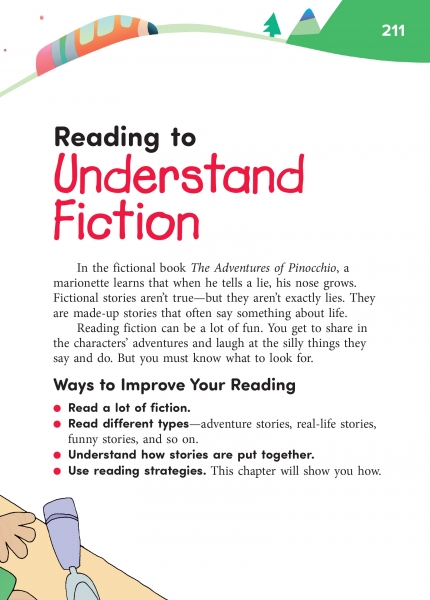Page 211 from

Start-Up Activity
Ask students to share the titles and plots of their favorite fiction books. Assure reluctant readers that a book they will love is out there somewhere, waiting for them.
Create a "reading box" for your classroom. Encourage students to write the names of favorite books and submit them. On the board, create a running list of these books. Also, invite students to submit questions related to their reading in any content area. From time to time, review and discuss these questions.
Think About It
“Books have to be heavy because the whole world is inside them.”
—Cornelia Funke

Start-Up Activity
Ask students to share the titles and plots of their favorite fiction books. Assure reluctant readers that a book they will love is out there somewhere, waiting for them.
Create a "reading box" for your classroom. Encourage students to write the names of favorite books and submit them. On the board, create a running list of these books. Also, invite students to submit questions related to their reading in any content area. From time to time, review and discuss these questions.
Think About It
“Books have to be heavy because the whole world is inside them.”
—Cornelia Funke
